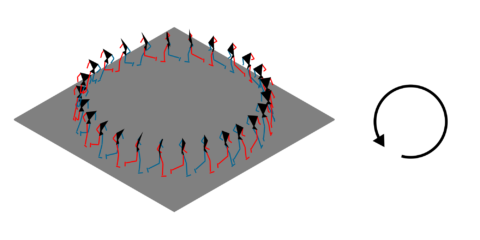New Paper: Efficient trajectory optimization for curved running using a 3D musculoskeletal model with implicit dynamics
In biomechanical motion analysis, trajectory optimization can be used for two purposes: reconstruction of measured movements and prediction of changes in movement in response to environmental changes. Trajectory optimization of musculoskeletal models enable an exhaustive analysis of various motion variables like joint angles, joint moments, ground reaction forces or muscle activation. In addition to straight walking and running, it is important to also simulate movements with changes in direction due to their relevance to daily activities and sports. However, the simulation of movements with directional changes, e.g. curved running, requires detailed three dimensional models which lead to a high-dimensional solution space. Within this paper, we extended a full-body three dimensional musculoskeletal model to be specialized for running with directional changes. Model dynamics were implemented implicitly and trajectory optimization problems were solved with direct collocation to enable efficient computation. Standing, straight running, and curved running were simulated starting from a random initial guess to confirm the capabilities of our model and approach: efficacy, tracking and predictive power. Read more!

